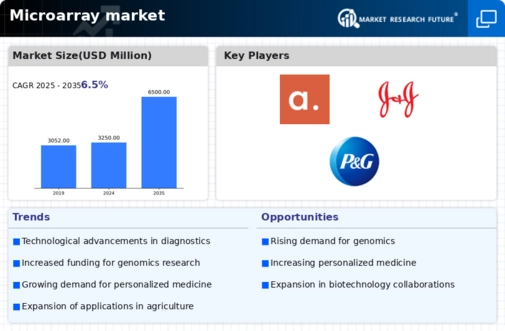Rising Demand for Biomarkers
The increasing emphasis on biomarkers in disease diagnosis and treatment is a pivotal driver for the proteomics market. Biomarkers play a crucial role in identifying disease states and predicting treatment responses. As healthcare systems in the US continue to prioritize precision medicine, the demand for proteomic analysis to discover and validate biomarkers is expected to surge. The proteomics market is projected to reach approximately $25 billion by 2026, reflecting a compound annual growth rate (CAGR) of around 10%. This growth is largely attributed to advancements in mass spectrometry and protein microarrays, which enhance the ability to analyze complex biological samples. Consequently, the proteomics market is likely to experience robust growth as researchers and clinicians increasingly rely on biomarkers for effective patient management.
Expansion of Drug Discovery Programs
The proteomics market is significantly influenced by the expansion of drug discovery programs across the US. Pharmaceutical companies are increasingly integrating proteomic technologies to identify potential drug targets and understand drug mechanisms. This trend is driven by the need for more efficient and cost-effective drug development processes. In 2025, the US pharmaceutical industry is expected to invest over $80 billion in research and development, with a substantial portion allocated to proteomics-related studies. The ability to analyze protein interactions and functions accelerates the identification of novel therapeutic candidates, thereby enhancing the overall drug discovery pipeline. As a result, the proteomics market is poised for growth as it becomes an integral part of the drug development landscape.
Increased Investment in Research Funding
The proteomics market is benefiting from increased investment in research funding from both public and private sectors in the US. Government agencies, such as the National Institutes of Health (NIH), have significantly boosted funding for proteomics research, recognizing its potential to advance biomedical science. In 2025, federal funding for proteomics-related research is projected to exceed $3 billion, fostering innovation and collaboration among academic institutions and industry players. This influx of capital is likely to drive advancements in proteomic technologies, leading to improved analytical capabilities and novel applications. Consequently, the proteomics market is expected to expand as researchers leverage these resources to explore new frontiers in protein analysis and its implications for health and disease.
Emergence of Advanced Analytical Techniques
The emergence of advanced analytical techniques is a key driver for the proteomics market. Innovations in mass spectrometry, liquid chromatography, and bioinformatics are revolutionizing the way proteins are analyzed and characterized. These technologies enable researchers to conduct high-throughput analyses, providing deeper insights into protein functions and interactions. In 2025, the market for mass spectrometry alone is projected to reach $6 billion, reflecting a growing reliance on these tools in proteomics research. As analytical capabilities improve, the proteomics market is likely to expand, facilitating the discovery of new therapeutic targets and enhancing the understanding of complex biological systems.
Growing Applications in Clinical Diagnostics
The proteomics market is experiencing growth due to the expanding applications of proteomics in clinical diagnostics. As healthcare providers seek more accurate and reliable diagnostic tools, proteomic technologies are increasingly utilized to detect diseases at earlier stages. The integration of proteomics into clinical workflows is anticipated to enhance patient outcomes and reduce healthcare costs. In 2025, the clinical diagnostics segment of the proteomics market is expected to account for approximately 40% of the total market share, driven by advancements in biomarker discovery and validation. This trend suggests that the proteomics market will continue to evolve, providing innovative solutions for disease detection and monitoring.














Leave a Comment